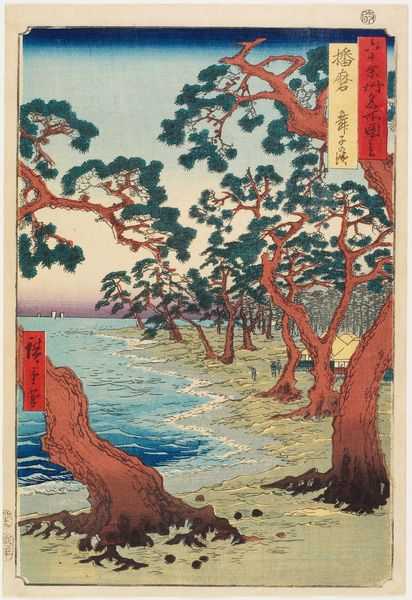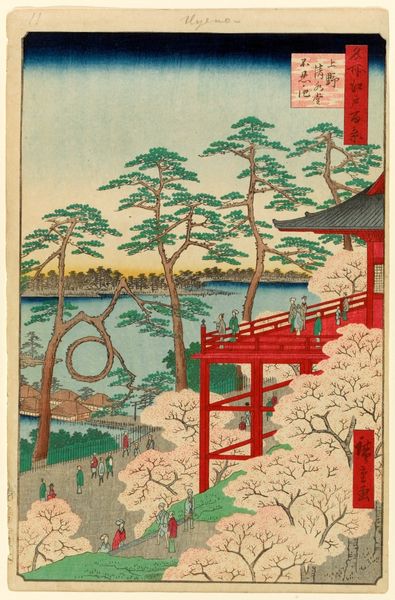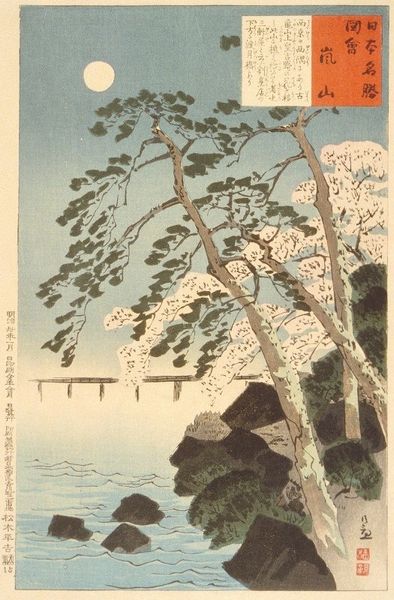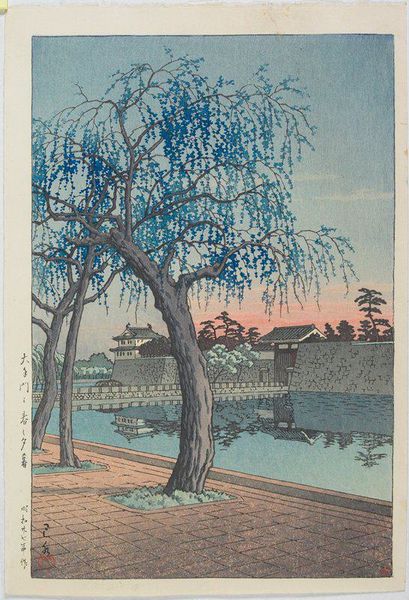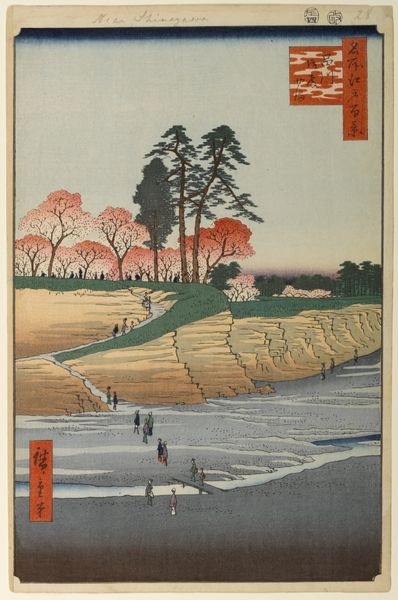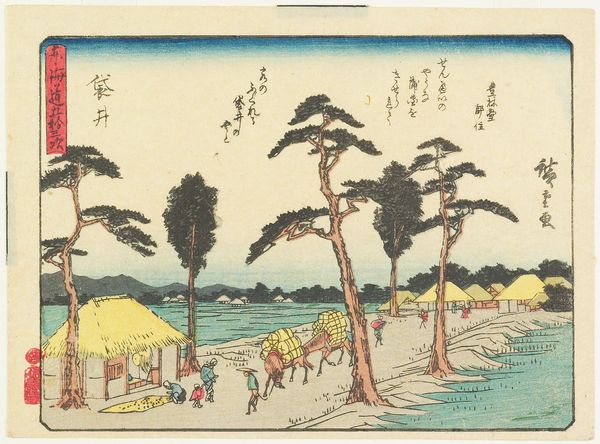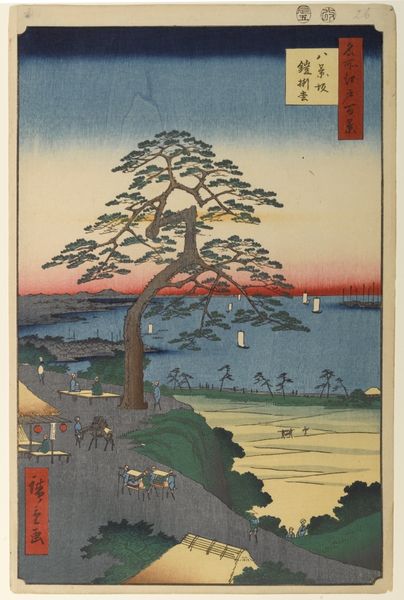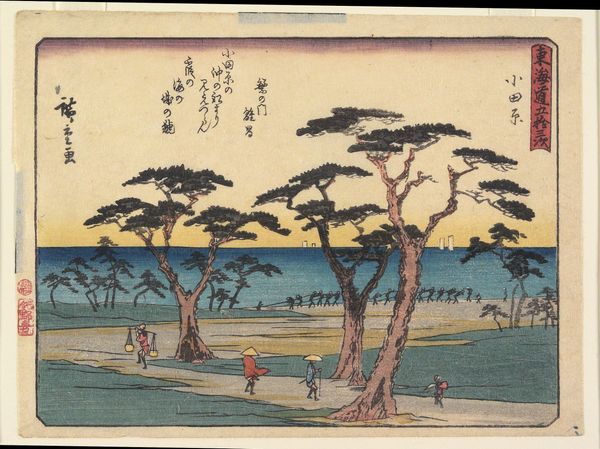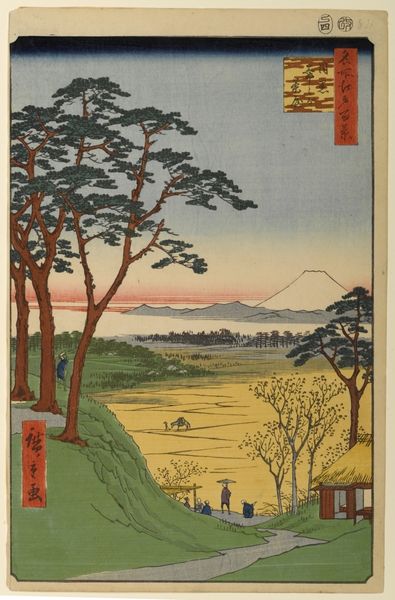
print, woodblock-print
#
water colours
# print
#
landscape
#
ukiyo-e
#
woodblock-print
#
watercolor
Dimensions: height 362 mm, width 245 mm
Copyright: Rijks Museum: Open Domain
Curator: Let’s turn our attention to “Het Maiko strand in de provincie Harima,” a captivating print by Utagawa Hiroshige from 1853, currently held at the Rijksmuseum. Editor: Immediately, I’m struck by the contrast of the soft, almost ethereal, sky and water against the stark, grounded trees. There’s a beautiful tension in the materials; I wonder about the labor involved in achieving this. Curator: That tension is a hallmark of ukiyo-e prints. The scene evokes a sense of tranquil distance. This specific location carried symbolic weight, too, as such idyllic scenery served to conjure ideas of safe passage and prosperous ventures. The coastal landscapes were familiar yet imbued with almost mythological significance for travelers and locals. Editor: Thinking about that mythological aspect – look at the prominent placement and sheer scale of these coastal trees. They almost dwarf the figures in the scene, yet seem deeply integrated into the earth. Curator: These pines are indeed powerful visual signifiers. They speak to longevity, resilience, even a kind of noble stoicism found in Shinto and Buddhist philosophies. See how their shapes, the textures of the bark, guide the eye across the entire landscape. Editor: Absolutely. And it is also clear to me how carefully chosen the medium must have been to accomplish the gradations of tone, the interplay of light, in woodblock printing. What kind of inks and dyes would Hiroshige have had access to in 1853, and where might these materials originate? Curator: Those dyes would have been derived from various plant and mineral sources, and mastering them demanded exceptional skill from both the artist and the printer, in the woodblock print workshop setting. The craft itself was steeped in history, so both technique and the materials themselves conveyed subtle cultural messages. Editor: It’s a thought-provoking marriage of nature and industry, wouldn't you say? Highlighting not just beauty but also the processes, social systems, and the earth’s resources all tied into creating one art object. Curator: Indeed. Hiroshige brilliantly used recognizable visual cues to invite viewers into a shared space of cultural understanding. Editor: Yes, and thinking about the embodied labor makes my own viewing experience more complex. Curator: For me, appreciating its iconic status highlights enduring Japanese values and reverence for the natural world.
Comments
No comments
Be the first to comment and join the conversation on the ultimate creative platform.

